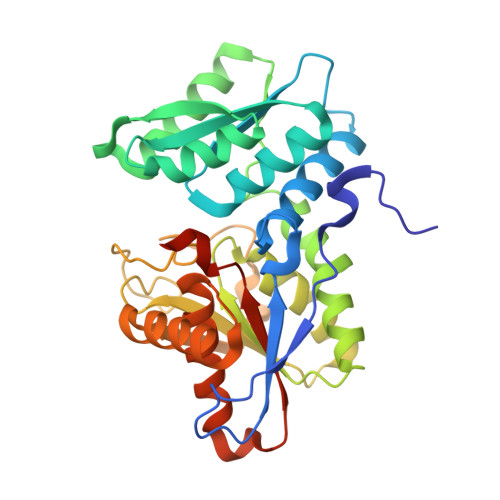Structure-Guided Design of Novel Thiazolidine Inhibitors of O-Acetyl Serine Sulfhydrylase from Mycobacterium Tuberculosis.
Poyraz, O., Jeankumar, V.U., Saxena, S., Schnell, R., Haraldsson, M., Yogeeswari, P., Sriram, D., Schneider, G.(2013) J Med Chem 56: 6457
- PubMed: 23879381
- DOI: https://doi.org/10.1021/jm400710k
- Primary Citation of Related Structures:
3ZEI - PubMed Abstract:
The cysteine biosynthetic pathway is absent in humans but essential in microbial pathogens, suggesting that it provides potential targets for the development of novel antibacterial compounds. CysK1 is a pyridoxalphosphate-dependent O-acetyl sulfhydrylase, which catalyzes the formation of l-cysteine from O-acetyl serine and hydrogen sulfide. Here we report nanomolar thiazolidine inhibitors of Mycobacterium tuberculosis CysK1 developed by rational inhibitor design. The thiazolidine compounds were discovered using the crystal structure of a CysK1-peptide inhibitor complex as template. Pharmacophore modeling and subsequent in vitro screening resulted in an initial hit compound 2 (IC50 of 103.8 nM), which was subsequently optimized by a combination of protein crystallography, modeling, and synthetic chemistry. Hit expansion of 2 by chemical synthesis led to improved thiazolidine inhibitors with an IC50 value of 19 nM for the best compound, a 150-fold higher potency than the natural peptide inhibitor (IC50 2.9 μM).
Organizational Affiliation:
Division of Molecular Structural Biology, Department of Medical Biochemistry & Biophysics, Karolinska Institutet, S-171 77 Stockholm, Sweden.

















